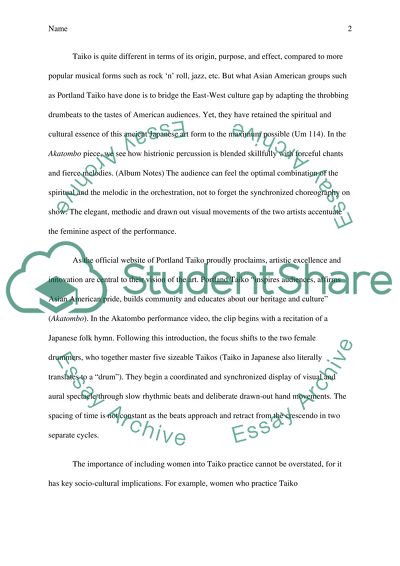Cite this document
(“Akatombo, by Naoko Amemiya of Portland Taiko: Unique Feminine Movie Review”, n.d.)
Akatombo, by Naoko Amemiya of Portland Taiko: Unique Feminine Movie Review. Retrieved from https://studentshare.org/visual-arts-film-studies/1457779-akatombo-by-naoko-amemiya-of-portland-taiko-unique-feminine-expression-in-modern-taiko
Akatombo, by Naoko Amemiya of Portland Taiko: Unique Feminine Movie Review. Retrieved from https://studentshare.org/visual-arts-film-studies/1457779-akatombo-by-naoko-amemiya-of-portland-taiko-unique-feminine-expression-in-modern-taiko
(Akatombo, by Naoko Amemiya of Portland Taiko: Unique Feminine Movie Review)
Akatombo, by Naoko Amemiya of Portland Taiko: Unique Feminine Movie Review. https://studentshare.org/visual-arts-film-studies/1457779-akatombo-by-naoko-amemiya-of-portland-taiko-unique-feminine-expression-in-modern-taiko.
Akatombo, by Naoko Amemiya of Portland Taiko: Unique Feminine Movie Review. https://studentshare.org/visual-arts-film-studies/1457779-akatombo-by-naoko-amemiya-of-portland-taiko-unique-feminine-expression-in-modern-taiko.
“Akatombo, by Naoko Amemiya of Portland Taiko: Unique Feminine Movie Review”, n.d. https://studentshare.org/visual-arts-film-studies/1457779-akatombo-by-naoko-amemiya-of-portland-taiko-unique-feminine-expression-in-modern-taiko.


